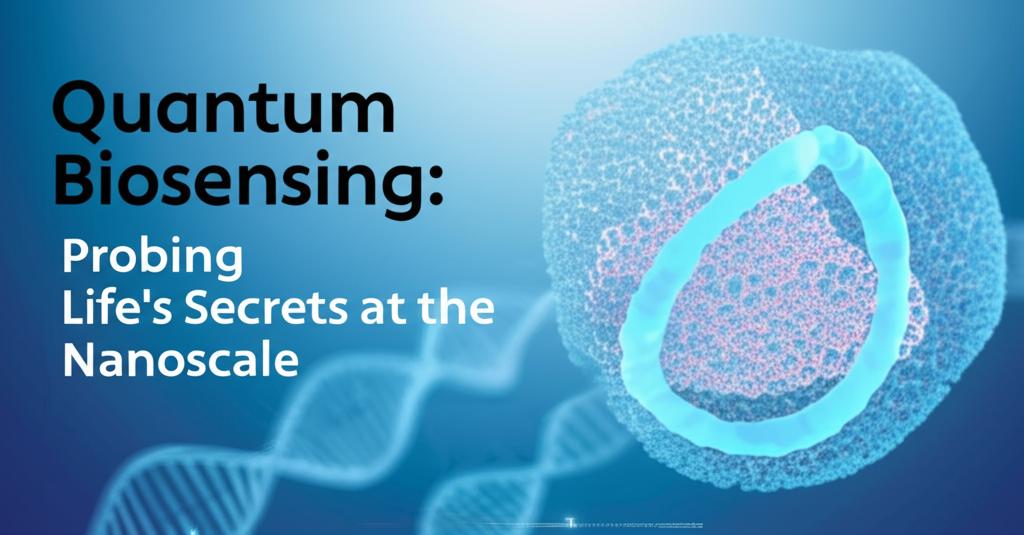Imagine peering into the very essence of life, not just at the cellular level, but at the intricate dance of molecules and atoms that dictates health and disease. This isn't science fiction; it's the rapidly advancing frontier of quantum biosensing. By harnessing the peculiar and powerful principles of quantum mechanics, scientists are now developing tools that offer unprecedented sensitivity and resolution, allowing us to probe biological processes at the nanoscale – a scale thousands of times smaller than the width of a human hair.
At the heart of this revolution are innovative quantum sensors, such as nitrogen-vacancy (NV) centers in diamonds, quantum dots, and even engineered fluorescent proteins. These aren't your everyday sensors. NV centers in nanodiamonds, for instance, act like tiny, ultra-sensitive magnets whose quantum state is affected by their immediate surroundings. By shining a laser on these nanodiamonds and observing the emitted light, researchers can measure minute changes in magnetic and electric fields, temperature, and pH levels within living cells and even multicellular organisms without causing damage.
This ability to "see" at such a fundamental level is unlocking a treasure trove of biological secrets. For example, quantum sensors are being used to track highly reactive free radicals within individual cells in real-time. Understanding the behavior of these molecules is crucial, as they play a significant role in processes like aging and diseases such as cancer. Traditional methods often look at the average behavior of millions of cells, masking the critical differences between individual cells that can drive disease progression and treatment response. Quantum biosensing, however, allows for this vital single-cell analysis.
The potential applications in healthcare are transformative. Imagine doctors being able to detect diseases like cancer or Alzheimer's at their very earliest stages, long before symptoms appear, by sensing subtle biomarker changes previously invisible to conventional tools. Quantum sensors could also revolutionize drug discovery by allowing scientists to observe how drug molecules interact with their targets at the molecular level, leading to more effective and personalized treatments. Furthermore, these technologies are paving the way for real-time health monitoring, potentially through wearable devices that can track brain and heart activity with exceptional detail.
Researchers are continually pushing the boundaries. For instance, new techniques are enabling quantum sensors to detect a wider range of frequencies, expanding their applicability. Scientists are also developing biocompatible quantum sensors, like those derived from jellyfish proteins or molecular quantum nanosensors (MQNs), that can function directly within living cells and even specific organelles, offering even more precise insights into cellular processes. The integration of quantum sensing with artificial intelligence (AI) and machine learning is set to further accelerate discovery, helping to analyze the complex datasets generated by these sophisticated sensors and identify disease patterns or predict treatment responses with greater accuracy.
While challenges remain in terms of scalability, cost, and the widespread implementation of these cutting-edge technologies, the pace of innovation is rapid. The UK, for example, has a national quantum strategy mission aiming for every NHS trust to have access to some quantum sensing systems for early diagnosis by 2030.
Quantum biosensing is not just an incremental improvement; it represents a paradigm shift in how we study and understand life. By providing an unprecedented window into the nanoscale world, it promises to unravel life's deepest secrets and usher in a new era of diagnostics, medicine, and our fundamental comprehension of biological systems.

